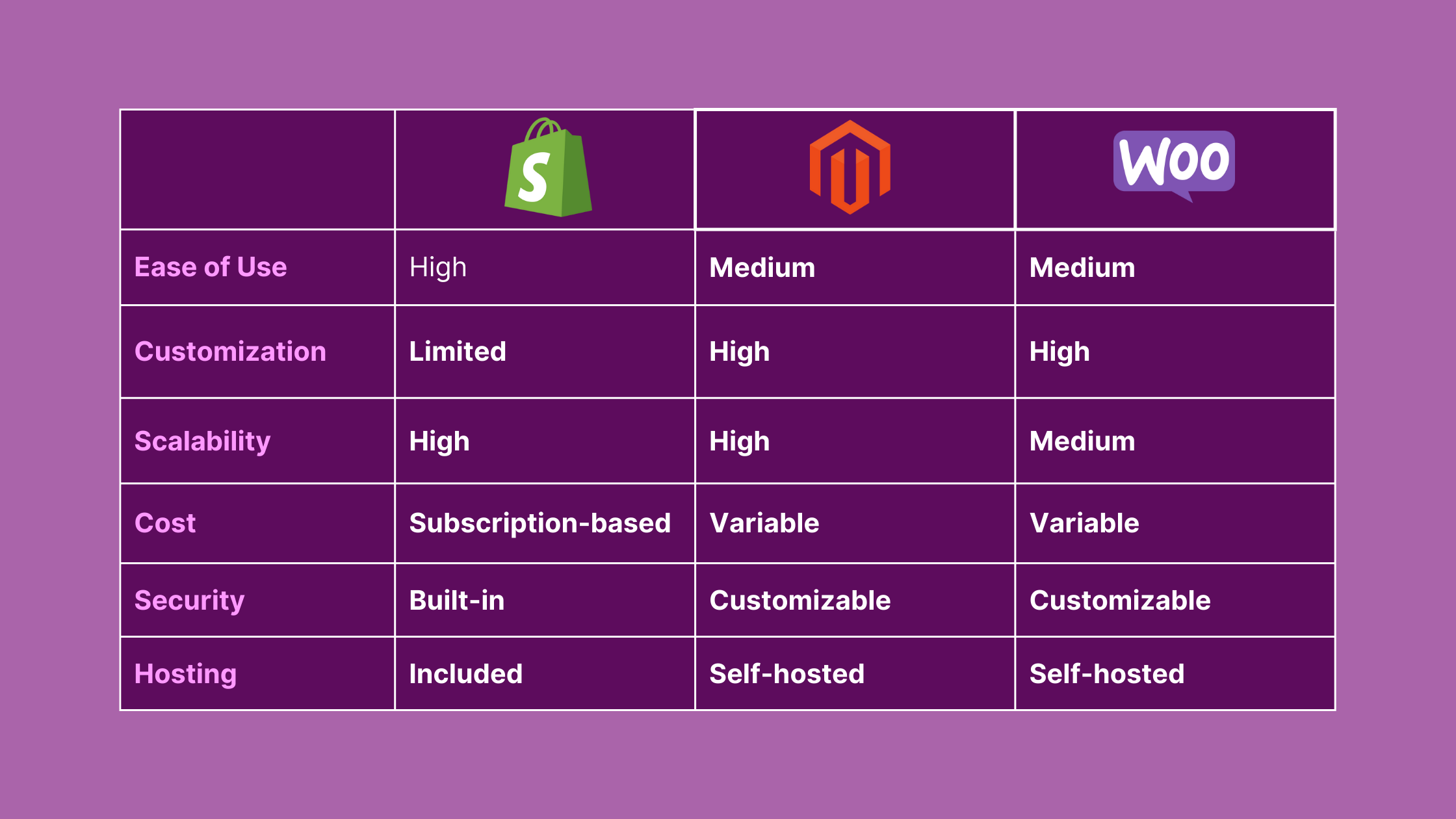
When building an e-commerce platform, choosing the right technology stack is critical. Among the most popular options are Shopify, Magento, and WooCommerce. Each platform offers distinct advantages and trade-offs. This article provides a technical breakdown to help senior software engineers evaluate these platforms.
Shopify

Overview
Shopify is a hosted e-commerce platform that handles the majority of backend operations, including hosting, security, and software updates. They offer a subscription-based service.
Advantages
- Ease of Use: Shopify’s intuitive interface simplifies setup and management for developers and non-developers alike, particularly when using Liquid-based templates (here are some examples).
- Scalability: Optimized infrastructure supports growth without performance bottlenecks.
- Built-in Features: Includes payment gateway integration, inventory management, and analytics out-of-the-box.
- Security: PCI DSS compliance and automatic SSL certificates.
Drawbacks
- Limited Customization: Developers face restrictions due to Shopify’s proprietary Liquid templating language (Hydrogen, Shopify's React-based framework offers an alternative, but it did not gain wide use).
- Ongoing Costs: Transaction fees and subscription costs can be significant, especially for high-revenue stores.
- Third-Party Dependency: Extensions and themes often require third-party purchases.
Magento

Overview
Magento, an open-source platform, offers flexibility and advanced customization. It is available in two versions: Open Source (free) and Adobe Commerce (paid).
Advantages
- Full Customization: Developers have complete control over code and design.
- Feature-Rich: Advanced capabilities like multi-store setups, complex pricing models, and robust APIs.
- Scalable: Designed to handle large product catalogs and high traffic volumes.
- Community Support: Extensive developer community and third-party extensions.
Drawbacks
- Resource Intensive: High demand for server resources and technical expertise for deployment and maintenance.
- Cost: Adobe Commerce licensing and enterprise hosting solutions can be expensive.
- Steep Learning Curve: Complex architecture and configuration processes.
WooCommerce

Overview
WooCommerce is a WordPress plugin that transforms a WordPress website into an e-commerce platform. It is open-source and highly customizable.
Advantages
- Integration with WordPress: Leverages the ecosystem of WordPress plugins and themes.
- Customizability: Open-source nature allows extensive modifications.
- Cost-Effective: No licensing fees; only hosting and optional extensions incur costs.
- Flexibility: Works well for small to medium-sized stores.
Drawbacks
- Performance: Large stores may face performance issues without optimized hosting.
- Maintenance: Requires manual updates for WordPress, WooCommerce, and plugins.
- Security: Vulnerable if plugins or themes are not properly vetted.
Comparison Table

Final Thoughts
The choice between Shopify, Magento, and WooCommerce depends largely on project requirements:
- Opt for Shopify if simplicity and rapid deployment are priorities.
- Choose Magento for enterprise-grade projects needing advanced features and scalability.
- Select WooCommerce for budget-conscious projects with moderate customization needs.
At Polipo, we are building a Shopify storefront that is fully customizable from Figma.
Curious about it?
Start here.